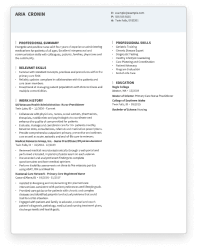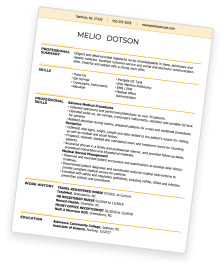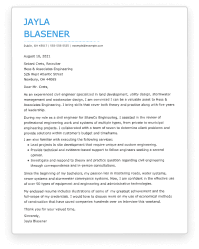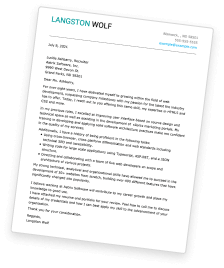Sushi Chef Resume: Overview
As a sushi chef, your primary responsibility is to prepare exquisite sushi dishes while ensuring freshness, quality, and adherence to food safety standards.
On a typical day, you prepare raw fish, slice and prep ingredients, or manage an inventory of fresh ingredients.
Sushi chefs are found in a variety of work environments, including:
- Upscale Restaurants
- Sushi Bars
- Catering Companies
- Hotels and Resorts
- Cruise Ships
Mastering the art of sushi-making requires a unique blend of culinary skills, attention to detail, and creativity.
Successful Sushi Chefs possess exceptional knife skills, a keen palate for flavors, and the ability to work efficiently under pressure.
Ready to create a standout sushi chef resume?
Explore our resume examples and expertly designed templates to start your culinary journey today!
Sushi Chef Resume: Choose a Format
Crafting an impressive sushi chef resume starts with selecting the best format to effectively showcase your skills, experiences, and culinary prowess.
Let’s explore the three main resume formats for sushi chefs and learn the pros and cons of each format.
Chronological Resumes for Sushi Chef
The first format to consider for your sushi chef resume is a chronological resume.
A chronological format is the most traditional choice, meaning it will be familiar to potential employers and compatible with applicant tracking systems or ATS.
Chronological resumes are like a timeline of your culinary career, highlighting your work history in reverse chronological order. This format is perfect for experienced Sushi Chefs with a solid track record in the culinary industry.
This format includes a detailed work history section, starting with your most recent job and working your way back, detailing your roles, responsibilities, and achievements.
For example, you could begin with your current or most recent position as a sushi chef at a prestigious restaurant or sushi bar.
Then, in bulleted sentences underneath the job entry, describe your daily tasks, such as sushi preparation, menu development, and team leadership.
Functional Resumes for Sushi Chef
On the other hand, functional resumes focus on your skills and achievements rather than your work history, making them ideal for career changers or someone just starting their career as a sushi chef.
This format emphasizes your skills and abilities without tying them to specific jobs or a chronological timeline.
For instance, you could underline your proficiency in sushi preparation techniques, menu development, and customer service. It also provides space to highlight relevant certifications, education coursework, or awards.
However, employers usually expect a detailed work history on your resume and may wonder why you haven’t included that information.
Likewise, a functional resume is incompatible with applicant tracking systems programmed to search for keywords in your work history.
While a functional resume may work well to emphasize your qualifications, it is important to understand the potential drawbacks of the format.
Combination Resumes for Sushi Chef
The third option is a combination format. Combination resumes blend elements of both chronological and functional formats, allowing you to showcase your relevant skills and experiences while highlighting your career achievements.
This format places your skills section above a detailed work history to emphasize both equally.
A combination format can be an excellent choice for someone with limited sushi chef experience or transitioning from a different career.
However, this format can make your resume lengthy, so take that into consideration when choosing your format. The ideal length for a sushi chef is 1-2 pages at most.
Choosing a Format
Choosing the right resume format depends on your unique career trajectory and goals as a sushi chef.
A chronological resume may be best if you have a solid work history and want to highlight your progression and growth.
However, a functional or combination resume could be more effective if you’re transitioning into sushi culinary arts from another field or want to emphasize your skills and achievements.
If you aren’t sure which format is right for you, career experts agree that a chronological resume is always a good choice.
Even if your job experience is unrelated to the culinary arts, you can emphasize transferable skills like communication, attention to detail and adaptability, which are highly valuable in a fast-paced restaurant kitchen.
No matter which format you choose, tailor your resume to the specific job you’re applying for and showcase your talents in the best possible light!
How to Write a Sushi Chef Resume
Knowing how to write a compelling Sushi Chef resume is essential for landing your dream job in the culinary world.
Once you have chosen your template and resume format, it is time to write five essential sections for a resume:
- Contact Information
- Resume Summary or Objective Statement
- Work History
- Skills
- Education
Each section plays a role in impressing potential employers and landing your dream job as a sushi chef!
Keep reading to find out how to make the most of each section.
Contact Information
First, you will ensure your resume includes up-to-date contact information, including your full name, city and state, professional email address, phone number, and (optionally) a LinkedIn profile.
Make it easy for employers to reach out and connect with you regarding job opportunities.
For example, a contact information section for a sushi chef resume might look like this:
Carla Nori
Los Angeles, CA
cnori@fake.email.com
555-555-5555
Summary or Objective
Next, you will write a short introduction for your resume to entice hiring managers to learn more about you. This introductory paragraph can be in the form of a resume summary or an objective statement.
A resume summary highlights your relevant skills and experiences, while an objective states your career goals and aspirations as a sushi chef.
A resume summary is a great choice for an experienced sushi chef because you can spotlight your most relevant skills and emphasize your years of experience.
For example, a resume summary for an experienced sushi chef might look something like this:
“Sushi chef with 5+ years of experience creating visually stunning and delicious sushi dishes. Proficient in traditional Japanese techniques and committed to delivering exceptional culinary experiences.”
An objective statement, however, is better suited to recent culinary school graduates or those who are looking for their first job as a sushi chef. An objective focuses on your passion for the job and your genuine interest in the position.
For example, an objective statement for a sushi chef’s resume might say:
“Dedicated sushi chef seeking an opportunity to showcase my creativity and expertise in a dynamic culinary environment. Eager to contribute to a team dedicated to delivering unparalleled sushi dining experiences.”
No matter which one you choose, it is a good idea to customize this introduction to each job you apply for. Incorporating culinary terminology and keywords from the job description will make your resume more ATS-friendly, increasing your chances that potential employers will see it!
Work History
Next, you will craft your work history section. This section is the main dish of your sushi chef resume!
Start by listing your previous jobs chronologically, starting with your most recent position and working backward.
Each job entry should include your job title, employer’s name and location, and the dates you were employed.
Then, under each job entry, you will write a few bulleted sentences describing your responsibilities and accomplishments at each job.
To make your work history more compelling to the reader, use strong action verbs like executed, prepared, plated or presented.
Action verbs help potential employers visualize you taking action. Another way to make this section shine is to quantify your achievements with numbers and percentages to validate your impact in previous roles.
Include the number of customers served per shift, increases in customer satisfaction, or decreases in food costs to make your resume stand out!
For inspiration, a typical job entry for a sushi chef resume might look like this:
Sushi Chef, Sushi Palace, Los Angeles, CA May 2018 – Present
- Prepared and plated exquisite sushi dishes, including nigiri, sashimi, and maki rolls, according to customer preferences and dietary restrictions.
- Maintained cleanliness and sanitation standards in the sushi bar area, ensuring compliance with health and safety regulations.
- Redesigned sushi menu to prioritize locally sourced ingredients, lowering food costs by 20%.
Again, you should tailor your work history to address the specific requirements of each position you are applying for.
Read each job posting carefully, and include your most relevant experience. Use keywords from the job description when it’s appropriate to help your resume pass through initial screenings by the ATS and hiring managers.
Skills
Next, you will create a skills section for your sushi chef resume.
Use this section to highlight your most relevant skills and competencies as a sushi chef, including proficiency in sushi preparation techniques, knife skills, and knowledge of Japanese ingredients and flavors.
Remember to tailor your skills section to match the requirements of the job you’re applying for. We’ve compiled a list of the top hard skills and soft skills for a sushi chef resume to help you get started:
Top 5 Hard Skills for Sushi Chef Resumes
- Sushi Preparation: Sushi chefs must be adept in traditional and contemporary sushi techniques, covering everything from perfectly seasoned rice to expert fish cutting and roll assembly. This skill showcases your ability to craft sushi dishes with authenticity and finesse, ensuring a delightful culinary experience for diners.
- Knife Skills: Demonstrating precision in knife work is essential for effortlessly slicing, dicing, and filleting fish and seafood. Your expertise in using knives correctly in this area ensures accurate cuts and boosts kitchen efficiency, allowing for swift and precise execution of dishes.
- Food Safety: A deep understanding of food safety regulations is crucial to maintaining impeccable hygiene and sanitation standards. By prioritizing food safety protocols, you assure both your employers and customers of a dining experience that is not only delicious but also safe and hygienic.
- Menu Development: Infusing your sushi creations with creative flair showcases your ability to develop innovative dishes and design visually captivating presentations. This skill not only keeps menus fresh and exciting but also demonstrates your commitment to pushing culinary boundaries and delighting customers with new flavors and experiences.
- Kitchen Management: Excelling in a fast-paced kitchen environment requires excellent kitchen management skills. By efficiently prioritizing and delegating tasks, maintaining inventory and adhering to safety standards, you ensure smooth operations and timely delivery of delectable dishes to eager diners.
Top 5 Soft Skills for Sushi Chef Resumes
- Creativity: Your ability to innovate and experiment with flavors, textures, and presentations sets you apart as a sushi chef. By infusing your creations with creativity, you craft memorable dining experiences that leave a lasting impression on customers.
- Team Collaboration: Effective communication and collaboration are essential for seamless coordination with kitchen staff and front-of-house teams. Your ability to work harmoniously ensures a cohesive dining experience that reflects positively on the establishment.
- Adaptability: Flexibility is key in a dynamic culinary environment where menus, ingredients, and customer preferences may change frequently. Your adaptability allows you to maintain high-quality standards while catering to evolving tastes and demands.
- Detail-Oriented: Meticulous attention to detail is evident in your work, from food preparation to plating and garnishing. This commitment to excellence ensures both aesthetic beauty and culinary perfection in every dish you create.
- Customer Satisfaction Commitment: Your dedication to delivering exceptional customer experiences shines through in your attentive service and personalized recommendations. By prioritizing customer satisfaction, you ensure repeat business, contributing to the restaurant’s success.
Your skills section can be formatted in a variety of ways, depending on how much page space you have and your chosen resume format and template. It may be a brief list of skills, like this:
SKILLS
- Highly Organized
- Creative Menu Development
- Detail-Oriented
- Fine-Dining Expertise
- Food Safety & Hygiene
- Portion Control
Or, you might provide more detail to emphasize your qualifications, like this:
SUMMARY OF SKILLS
Culinary Expertise:
- Proficient in traditional and contemporary sushi preparation techniques
- Precision knife skills for slicing, dicing, and filleting fish and seafood
Food Safety & Hygiene:
- Comprehensive knowledge of food safety regulations and protocols
- Commitment to maintaining the highest standards of hygiene and sanitation in the kitchen
Menu Development & Innovation:
- Creative flair for developing innovative sushi creations
- Ability to design visually appealing plating presentations
Education
Next, you will provide your educational background relevant to your career as a sushi chef, such as culinary school or specialized training programs.
List your degree or certification, the name of the institution, and any relevant coursework or honors.
For example, an education section of a sushi chef’s resume might look like this:
Associate Degree in Culinary Arts
Sushi Chef Certification Program
Culinary Institute of America, New York, NY
You can also include special certifications or training you have received in this section, or you can create additional sections to highlight that information.
Additional Sections
Once you have carefully crafted the above five sections of your resume– if space allows– you can consider some additional sections to showcase your unique qualifications.
Consider adding sections such as:
- Language Skills: Fluency in Japanese or other languages can be a valuable asset in a sushi kitchen.
- Awards and Recognitions: Highlight any accolades or achievements in culinary competitions or industry awards.
- Professional Development: Include any workshops, seminars, or continuing education courses related to sushi making or Japanese cuisine.
Top Certifications For Sushi Chef
Adding a section highlighting your professional certifications can enhance your credibility and marketability as a Sushi Chef.
Some of the top certifications for a sushi chef are:
- ServSafe Food Handler Certification: Demonstrate your knowledge of food safety practices and regulations, which are essential for maintaining hygiene standards in the kitchen.
- Sake Sommelier Certification: Specialized training in sake appreciation and service, enhancing your ability to pair sushi dishes with complementary sake selections.
- Master Certified Food Executive (MCFE): this credential validates your expertise in customer service, food service management and storage, showing you are ready to be a chef.
Including relevant certifications on your resume demonstrates your commitment to professional growth and expertise in the field of sushi culinary arts.
9 Tips For Writing A Sushi Chef Resume
Showcase Your Expertise: When writing your resume, highlight your mastery of sushi preparation techniques and your deep understanding of Japanese culinary traditions. Share specific examples of your signature dishes or successful menu creations to showcase your culinary expertise.
Customize Your Resume: Tailor your resume to each job application by carefully reviewing the job requirements and incorporating keywords and phrases from the job description. Highlight relevant experiences and skills that align with the employer’s specific needs.
Quantify Your Achievements: Quantify your achievements by using numbers and metrics to showcase your impact in previous roles. For example, mention the number of sushi rolls you prepared per hour or the percentage increase in customer satisfaction ratings during your tenure.
Highlight Your Creativity: Showcase your creativity by describing your ability to innovate and create visually stunning sushi presentations. Share examples of unique sushi rolls or special dishes you’ve developed that showcase your artistic flair and culinary imagination.
Emphasize Teamwork: Demonstrate your collaborative skills by highlighting your ability to work effectively with kitchen staff and servers. Describe how you’ve contributed to a positive team dynamic and facilitated smooth communication and coordination in the kitchen.
Prioritize Food Safety: Showcase your commitment to maintaining the highest standards of hygiene and sanitation in your resume. Highlight any training or certifications you’ve obtained in food safety and describe your adherence to strict food handling protocols.
Highlight Language Skills: If you’re proficient in Japanese or other languages, highlight these language skills as valuable assets on your resume. Mention your ability to communicate with Japanese-speaking colleagues or customers, enhancing your versatility in the kitchen.
Keep it Clear and Concise: Ensure your resume is clear, concise, and easy to read by using a clean layout and organizing your information logically. Avoid unnecessary jargon or overly technical language, and focus on highlighting your most relevant experiences and skills.
Proofread Carefully: Double-check your resume for typos, grammatical errors, or formatting inconsistencies before submitting it. A polished and error-free resume demonstrates attention to detail and professionalism, increasing your chances of making a positive impression on potential employers.
Helping Job Seekers Like You
View Similar Resumes
- Executive Chef Resume
- Sushi Chef Resume
- Cook Resume
- Restaurant Assistant Manager Resume
- Restaurant Manager Resume
- Baker Resume
- Dishwasher Resume
- Pastry Chef Resume
- Prep Cook Resume
- Line Cook Resume
- Kitchen Manager Resume
- Restaurant General Manager Resume
- Chef Resume
- Fast Food Manager Resume
- Sous Chef Resume


Use Hloom's Resume Builder
Key Takeaways
- Crafting a standout Sushi Chef resume requires highlighting your culinary skills, creativity, and attention to detail.
- Choose the right resume format to showcase your experience and qualifications effectively.
- Use keywords from the job description to help your resume get selected by the ATS.
- Tailor your resume to match the specific requirements of each job application to stand out to potential employers.
- Proofread carefully to ensure a polished and professional appearance.
More Resume Examples
Use Hloom's Cover Letter Builder














